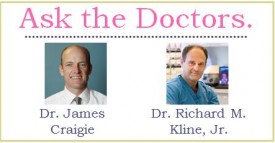 This week, Dr. Richard M. Kline, Jr. of The Center for Natural Breast Reconstruction answers your question.
This week, Dr. Richard M. Kline, Jr. of The Center for Natural Breast Reconstruction answers your question.
QUESTION: I had a DIEP done at the same time of my mastectomy a few years back. My incisions opened up around both breasts one week after surgery. After about 3 months of my doctor telling me to put Vaseline on them and keep the areas covered, they became very infected. I then got a second opinion.
The next doctor had me on the operating table the next day and probably did a dozen surgeries on me over the next year to get me healed because I was so infected from being open for so long. I’m scared about this, and I’m very self-conscious about my breasts. One of my breasts was set lower on my chest than the other, making wearing bras difficult. The same breast that is positioned lower on my chest is also larger. It is impossible to wear bathing suits comfortably, too. I have to watch how tops are cut on me because they will show that my breasts are uneven. Is there anything your doctors can do to help with this?
ANSWER: I’m terribly sorry about all the trouble you’ve had – it sounds like a real nightmare. I can’t, of course, guarantee you that we can make you good as new, but I strongly suspect that we can help, as we’ve seen plenty of other patients with similar stories. Probably the best place to start would be to have one of us call you to discuss your situation further, if that’s OK. It would be very helpful if we had some pictures to look at at the time of the conversation, but that’s not essential at this stage. I also suspect you will ultimately benefit from having an MRI at some point, as this is the best way to look for dead fat or other potential problems. Hang in there, no need to lose hope at this point.
— Richard M. Kline, Jr., M.D.
Have a question about breast reconstruction or post-surgical care you’d like answered from our surgical team? Just ask us!














